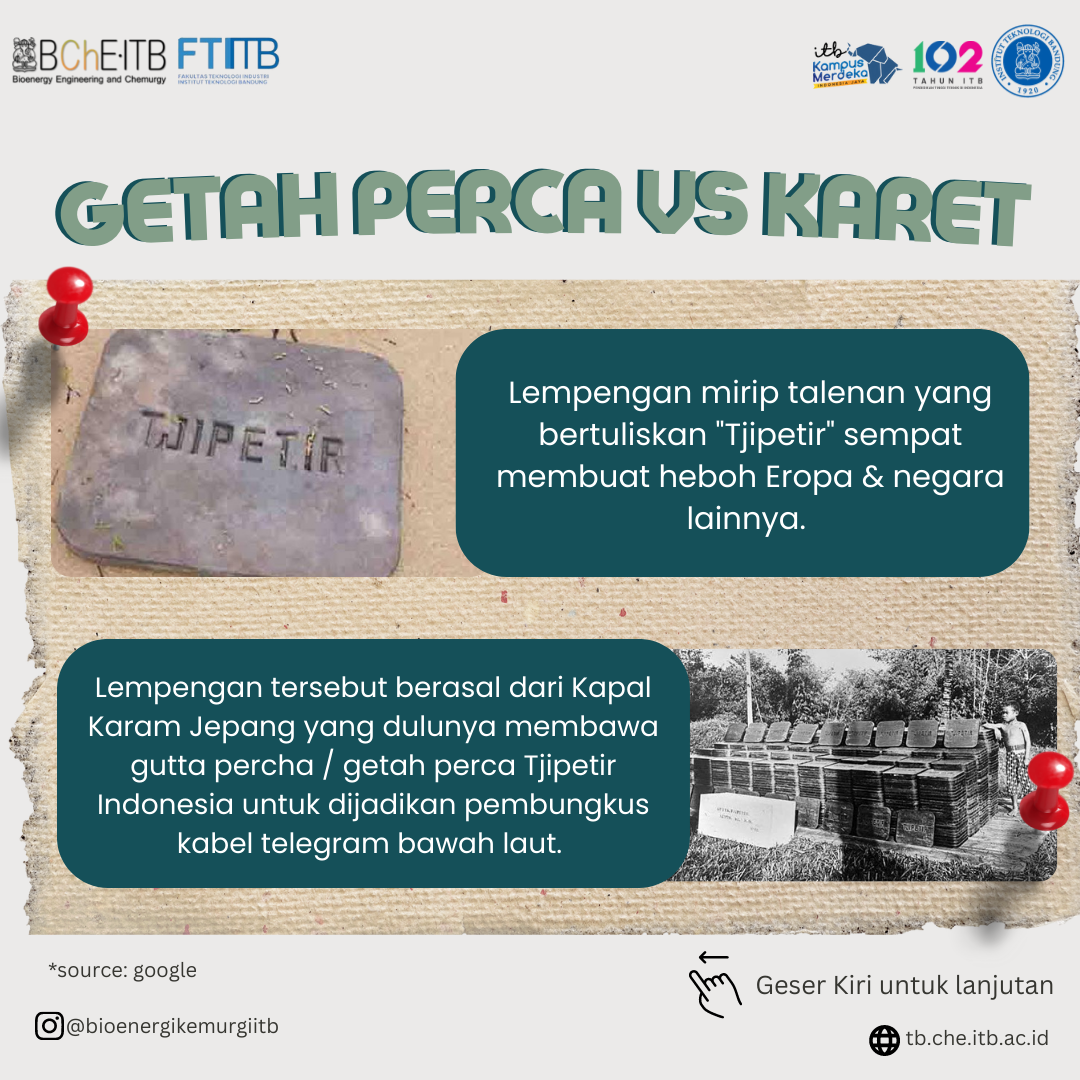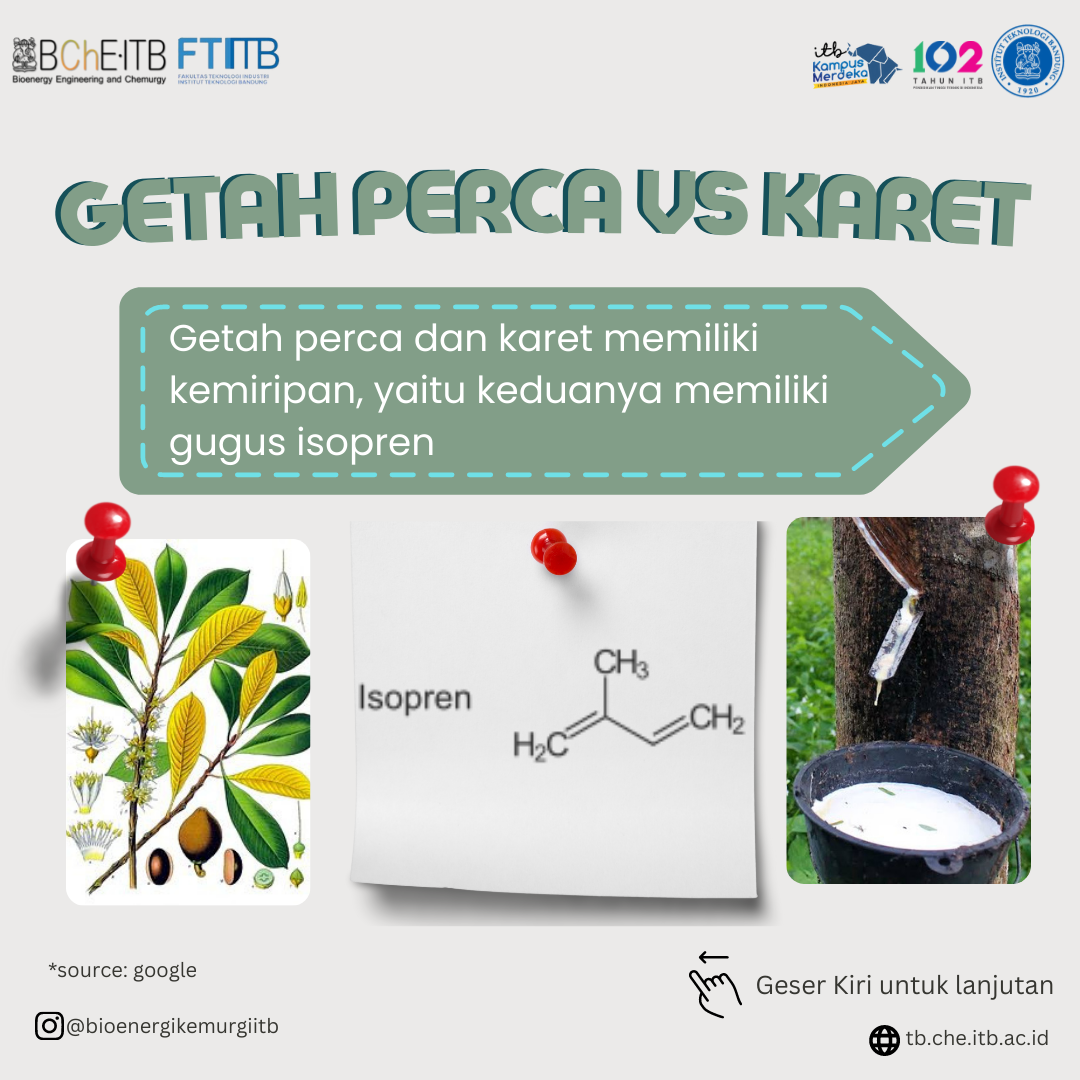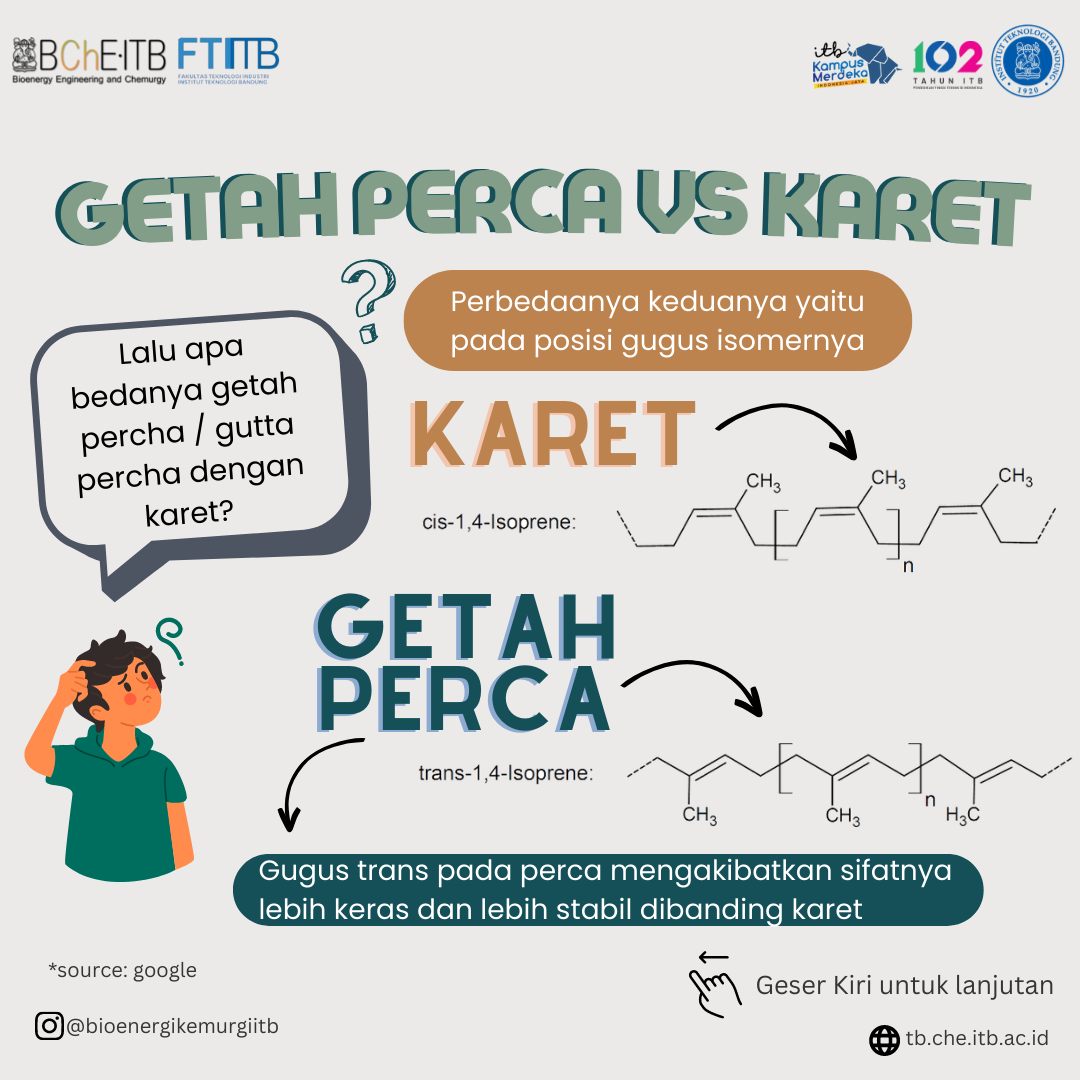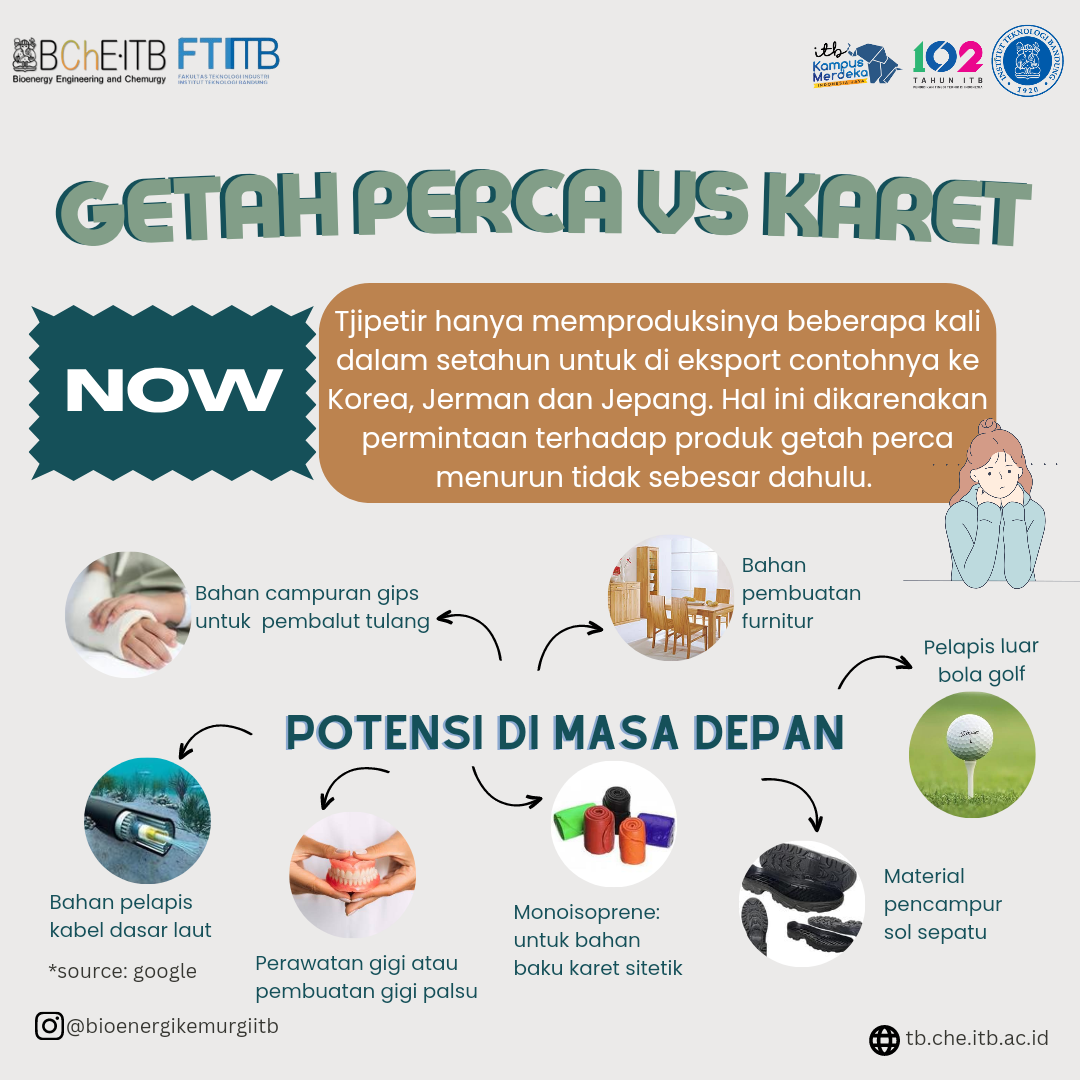[:id]
Lempengan mirip talenan yang bertuliskan “Tjipetir” sempat membuat heboh beberapa negara khususnya negara Eropa dan negara lainnya. Lempengan tersebut ditemukan pada musim panas tahun 2012. Kapal Jepang membawa lempengan getah perca Tjipetir Indonesia untuk dijadikan pembungkus kabel telegram bawah laut, namun kapal tersebut karam.

Getah perca dan karet yang digunakan sehari-hari memiliki kemiripan. Keduanya memiliki gugus isopren pada gugus kimianya.

Namun apa perbedaan dari keduanya? Perbedaan keduanya berada pada gugus isomer keduanya, Karet memiliki gugus cis sadangkan Getah Perca memiliki gugus trans pada isomernya. Gugus trans pada getah perca tersebut mengakibatkan sifatnya lebih keras dan lebih stabil dibandingkan karet.

Keadaan Tjipetir saat ini hanya memproduksi getah perca beberapa kali dalam satu tahun dengan tujuan untuk dieksport kebeberapa negara seperti Korea, Jerman dan Jepang. Hal ini dikarenakan permintaan terhadap produk getah perca menurun tidak sebesar dahulu.
Potensi getah perca di masa depan sangat menguntungkan beberapa contoh pemanfaatannya adalah:
- Bahan campuran gips untuk pembalut tulang
- Bahan pembuat furnitur
- Pelapis luar bola golf
- Material pencampur sol sepatu
- Sebagai Monoisoprene: untuk bahan baku karet sintesis
- Perawatan gigi atau pembuatan gigi palsu
- Bahan pelapis kabel dasar laut
sumber: google[:en]
A plate that looks like a cutting board that reads “Tjipetir” has caused a stir in several countries, especially European countries and other countries. The slab was found in the summer of 2012. The Japanese ship brought the Indonesian Tjipetir Gutta-percha to be used as wrapping for underwater telegram cables, but the ship sank.

Gutta-percha and rubber that are used daily have similarities. Both have an isoprene group in their chemical group.

But what is the difference between the two? The difference between the two is in the isomer group of the two, Rubber has a cis group while Gutta-percha has a trans group in its isomer. The trans group in Gutta-percha makes it harder and more stable than rubber.

The current state of Tjipetir is that it only produces gutta percha several times a year with the aim of exporting it to several countries such as Korea, Germany and Japan. This is because the demand for gutta percha products has not decreased as much as before.
The potential for gutta percha in the future is very profitable, some examples of its utilization are:
- Gypsum mixture for bone dressing
- Furniture making materials
- Golf ball coating
- Mixing material for shoe soles
- As Monoisoprene: for synthetic rubber raw materials
- Dental care or manufacture of dentures
- Seabed cable coating material
source: google[:]

